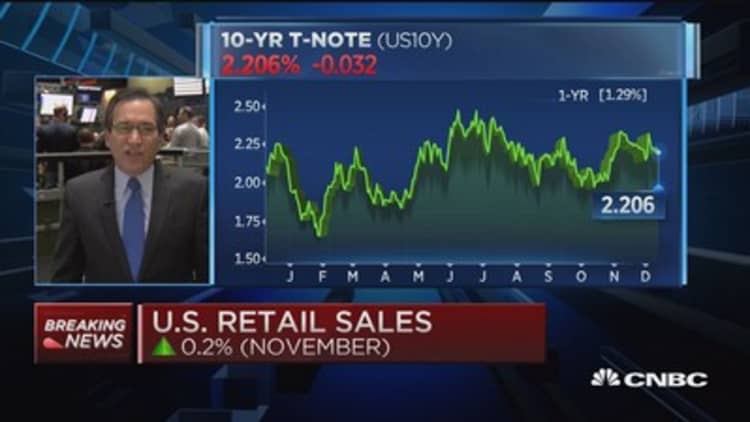Department stores reported another monthly slide in sales on Friday, as revenues dropped 2.8 percent in November compared with those of the prior year.
Now, like a vulture ready to swoop on its prey, another group of retailers is positioned to pick off even more of their sales: off-price.
There are two key reasons why budget-conscious consumers have flocked to stores such as TJ Maxx and Burlington over the past few years.
For one, the hodgepodge of products gives shoppers the thrill of the hunt, as the merchandise mix — which is pooled from several popular brands — is always changing. For another, the concept of snatching up name-brand products at a discount gives shoppers a feeling of inherent value.
But according to Citi analyst Paul Lejuez, there's another key factor contributing to the dominance of off-price: It's capturing share from department stores, which have left nearly $1 billion up for grabs because of store closings.
According to Lejuez's calculations, which are based on actual 2015 closings and estimated future shutterings, $963 million in sales will be up for grabs next year. That bakes in about 40 locations Macy's is in the process of closing, roughly 30 stores for J.C. Penney and a combined 70 between Kmart and Sears.
"We are talking about a significant number of stores that are closing and a significant amount of business up for grabs," Lejuez told investors.
Traditional department stores have wised up to the popularity of off-price, with Macy's, Lord & Taylor and Kohl's all entering the space this year. As a result, some have expressed concern that these concepts could eat away at TJX or Ross' sales.
As it pertains to Macy's, which plans to open 50 "Backstage" stores over the next two years, Lejuez said he does not think the development of these locations will have a material impact on TJX or Ross. Instead, the retailer could ultimately end up giving share to off-price, not taking it.
"While Macy's plans to open 50 Backstage doors over the next two years, they plan to close 40 of its full-price stores at the end of this year alone," he said. "And while we would estimate a Macy's Backstage door may average $5 million to $10 million, we estimate a full-price Macy's store achieves $25 million to $30 million in sales."
Department stores have been losing share for years. According to Customer Growth Partners, they used to account for 10 to 15 percent of the retail market; now, they account for about 2 or 3 percent.
Meanwhile, off-price retailers have been gaining about a half-point share each year just when it comes to apparel, Customer Growth Partners said.

The shift toward off-price, along with an influx of inventory, has placed even more pressure on full-price department stores, which are stuck in a deflationary environment. Jack Kleinhenz, chief economist at the National Retail Federation, said low prices are a key reason why retail sales excluding autos, gas and restaurants showed only modest growth in November.
Ronen Lazar, CEO of Inturn, a company that helps retailers buy and sell excess inventory, said the popularity of off-price "may well signify a shift in the apparel and retail industry."
"We're seeing an increase in demand for this product," he said.





